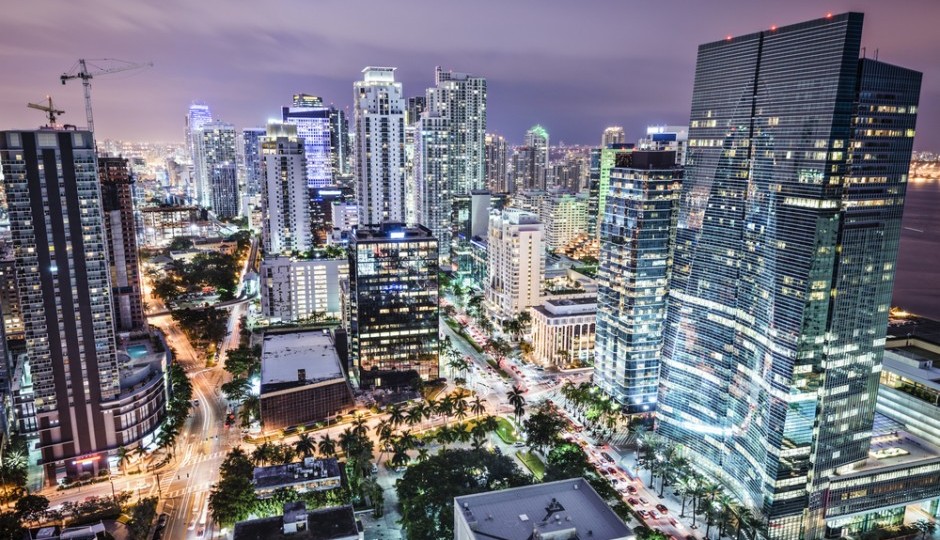Slowing Gentrification By Building Up

Shutterstock.com
According to a recent story in Governing, the city of Miami might have found an interesting deterrent against gentrification: Height restrictions on development. Not the creation of regulations, but the absence of them.
Miami doesn’t control building heights as strictly as most major cities, and the result has been a residential tower building boom in recent years. Out of the 64 buildings that are 400 feet or taller in the city, 53 have been erected since 2000. And according to the story, there’s been virtually no gentrification spillover into the the residential areas bordering the business district — named Brickell — where most of the tall buildings have been raised. Areas like Little Havana and Overtown — two minority-majority, middle-class neighborhoods — have not witnessed the kind of displacement that’s familiar to, say, parts of Point Breeze in Philly. As Governing reports:
According to the real estate site Zillow, median home values in both neighborhoods are about half of what they are citywide and about one-third of Brickell’s. While both areas have some new condos, they are still predominately historic and low-slung. Most important, people there have stayed put. Both Little Havana and Overtown remain 95 percent non-Anglo, with median incomes below $24,000.
It’s not exactly a utopian vision: wealthier (new) residents moving into the high-rises; middle-class (original) residents remaining in the surrounding neighborhoods — that’s a forecast for economic segregation, even if it’s eliminating degrees of displacement.
But for pro-market intellectuals, Miami’s experience lends credence to a theory long-argued by the famed real-estate economist Edward Glaeser. He argued that eliminating height restrictions allowed developers to respond to growing populations by building vertically. With height restrictions in place, however, an influx of younger (often wealthier) people duke it out for existing housing, spreading out laterally while paying higher prices, thus displacing the longtime residents. In The Atlantic magazine in 2011, Glaeser wrote that in the absence of height limitations, though, “price increases in gentrifying older areas will be muted because of new construction.”
It might be too early to score Miami’s development a win for Glaeser’s theory. Those neighborhoods could see displacement down the road. Perhaps it’s even started. But let’s say it holds true and let’s assume the outcome is desirable for the city overall (Glaeser’s story was titled “How Skyscrapers Can Save the City” after all).
So, what would happen if Philadelphia scrapped its height limits and embraced Miami’s approach. Would a similar crop of high-rises appear in greater Center City? And would that slow gentrification?
In a word, no. There’s bigger differences between the two cities than the zoning code. One big one is construction costs, which are prohibitively expensive in Philadelphia. “We have the same construction costs of New York, but the rents and prices of Baltimore,” says Kevin C. Gillen, senior research fellow at Drexel’s Lindy Institute and chief economist for Meyers Research LLC. Construction costs in Philly are more than 20 percent above the national average, according to Gillen, putting a major constraint on building densely and upwardly. Plus, we have an abundance of housing supply to begin with. “It’s not like if we had a do-over, Center City would be rebuilt like a Manhattan,” Gillen says.
As for the notion that higher-density buildings in Center City could counter displacement in neighborhoods like Bella Vista or Point Breeze, construction costs, again, would get in the way. With higher construction costs come higher rents, meaning that plenty of millennials couldn’t afford shiny new high-rise apartments even if they existed.
Until construction costs are lowered, high-occupancy residential construction will remain a rarity in Philly, and the neighborhoods with height restrictions will continue to absorb the spillover of those who can’t pay to live in Center City.